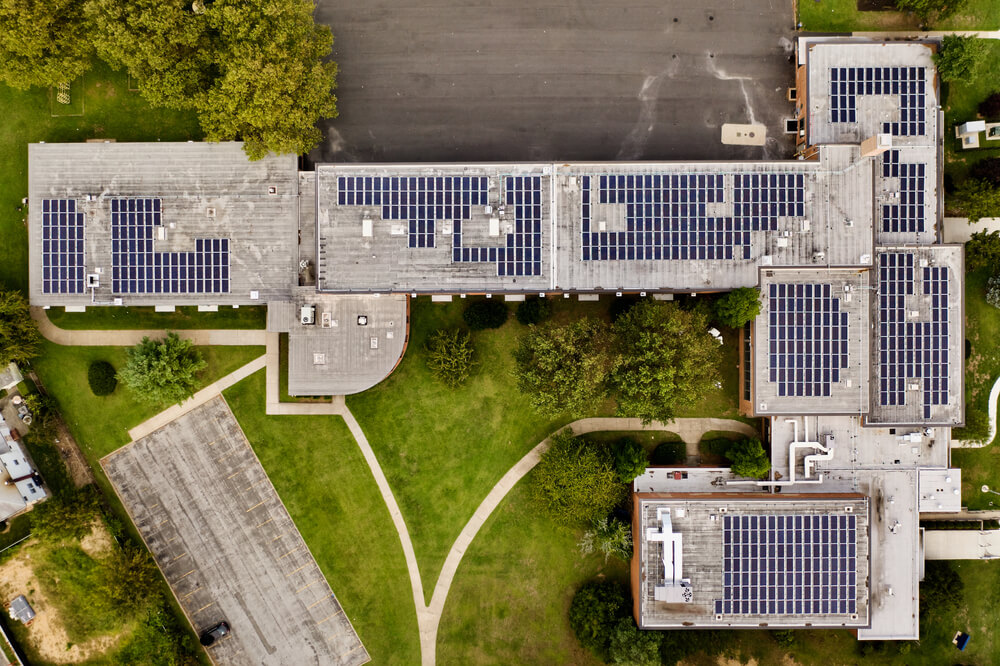ImpactAlpha, Dec. 12 – San Francisco-based Adasina Social Capital calls itself a “bridge between financial markets and social justice.” But even an organization accustomed to breaking down barriers found itself humbled by unforeseen complexities in a familiar corner of the financial markets: municipal bonds.
In 2020, Adasina launched its “Fiscal Justice Municipal Strategy,” which sought to answer a question team members had pondered for years: Can investing in muni bonds alleviate some of the inequities faced by communities of color? The company invested $60 million in mostly-Black municipal entities such as cities, water districts, school districts, and some historically Black colleges and universities.
The strategy tested two theses: first, that bond issues from fiscally sound, but under-resourced Black communities are systematically mispriced because of racial bias, resulting in Black communities paying more for debt across a range of criteria. “We will identify and invest in a subset of communities with a greater perceived risk, and which may offer higher yields to investors,” Adasina wrote in its investment case.
The second thesis looked for cities with material “fiscal justice deficiencies” that could be mitigated with deep engagement and local organizing and advocacy partners. Such cities might have an over-reliance on “fines and fees” that impose disproportionate burdens on people of color, or overuse tax abatements that undercut local revenues, or underinvest in public health.
“When combined with an active citizenry and receptive leadership, these communities have the potential to be engaged around fiscal justice issues to unlock financial value at the municipal level,” the investment case explained.
Cities that met the criteria for the second thesis proved harder to find than expected. The first thesis presented a more fundamental problem: the higher returns caused by the “Black tax” on Black communities effectively leveraged the same historical discrimination the strategy had been intended to root out.
“As an institutional investor, it’s my job to identify inefficiencies in the markets and exploit them,” said Adasina co-founder and COO Maya Philipson. Stock investors may see value in companies that others do not, for example, or opportunities to sell short shares that are likely to fall. There’s a different calculus for communities and human lives, however.
“As an impact investor, it’s my job to consider funds flowing into communities and how they impact communities chosen for investment and those not chosen,” Philipson told ImpactAlpha. “As impact investors, our impulse shouldn’t be to exploit the system.”
In the end, Adasina opted to end the Fiscal Justice Municipal Strategy after the pilot program had concluded.
‘Black tax’
Why can’t Memphis, Tennessee count on getting the same quality of roads, bridges, parks or even school systems as Madison, Wisconsin?
Plenty of attention goes to new flavors of bonds labeled “social,” “green,” or “ESG.” The Adasina team was interested in going further to alleviate racial inequities long entrenched in the muni market.
“At their most basic level, municipal bonds should be forming equitable systems because they are mostly for infrastructure,” Philipson figured. “What can we look at in the market to start to prove that the systemic racism is there?”
Numerous studies (for example, here, here and here) document the persistence of what’s often called a “Black Tax.” All else being equal, communities with higher concentrations of African-American residents pay higher interest rates to raise capital through the municipal bond market. The Black tax can add nearly half a percentage point to borrowing costs for municipalities with higher proportions of Black residents.
The Adasina team had had little exposure to munis when it embarked on the Fiscal Justice Municipal Strategy early in 2020. Adasina more typically invests in publicly traded stocks; in 2020, for example, it launched an exchange-traded fund called the Adasina Social Justice All Cap Global ETF, whose portfolio is made up of corporate equities.
For the muni bond pilot, the Adasina team received a grant from the Robert Wood Johnson Foundation and lined up interest from other foundations among its existing institutional investor clients (disclosure: the Robert Wood Johnson Foundation supports ImpactAlpha’s “Muni Impact” coverage).
Other advocates already had done the hard work of identifying racism in the market. Research group Activest helped Adasina identify communities that issue bonds in the municipal market – as well as institutions like historically black colleges and universities – that would fit the project’s criteria.
Some of the bonds purchased included those from the Memphis Light, Gas and Water Division, school bonds issued by the city of Danville, Virginia, and revenue bonds issued by the city of Baltimore for a wastewater project.
Muni market mechanics
Because Adasina had such specific criteria about what to buy, there were few new issues that met their needs. The muni market is very opaque, even its participants agree, and relies on manual processes and entrenched traditions. Also, they were deploying a small amount of capital – a total of $60 million, to be spread across a variety of issuers.
“Purchasing the bonds became an even more difficult exercise than identifying them,” Philipson said.
That meant most of their trades were done in the secondary market. When bond issuers like local governments, school districts, and even historically black colleges and universities sell to the municipal market, those sales take place in what’s called the primary market. Often – but not always – big institutional players like investment banks snatch up large blocks of bonds at the time of sale. In most cases smaller chunks of those blocks later make their way into a secondary market, where investors buy and sell the bonds until they mature.
That didn’t necessarily blunt the potential for impact. Activest, the research group that helped Adasina launch the project, had initially advocated for a more activist approach. That is, Philipson said, “Could we go to the communities and say, we own your bonds, we want you to change?”
Chelsea McDaniel, a senior fellow with Activest, agreed that investing in bonds in the secondary market lets investors see how the proceeds of the original bond sale have been used, how the municipality has raised revenues to support debt service, and what budget priorities it has followed. Activist bondholders would be a new development in the municipal market.
“Adasina is spot on in saying that in making an impact, it takes longer,” McDaniel said. “Bondholder engagement takes time.”
Moving the Needle?
In retrospect, Philipson wonders if Adasina’s approach could ever have had an immediate impact. Leveling the playing field in the market probably requires more money than their pilot project deployed, she thinks.
“What is the best way for us to influence the system, the best way for us to use our voice?” Philipson wonders in a conversation with ImpactAlpha. “Is it actually with the cities themselves or structurally with the overall system?”
One of the ideas that sprang from Adasina’s project, for example, is that state-level bond banks might help mitigate some of the structural racism faced by smaller communities of color. That coincides with work done by the Public Finance Initiative. Bundling bond deals from multiple municipalities through state-level bond banks has long been used to achieve economies of scale, with benefits for both issuers and investors. Now, bond banks are getting a new look as a possible tool for mitigating risk perceptions about predominantly Black communities, by bundling issues in broader packages.
Yet the red-leaning states where deep-blue municipalities might most benefit from a bond bank are the ones that are least likely to address entrenched racism, says Matt Fabian, a partner with Municipal Market Analytics. What’s more, historically strained relationships between those communities and their state governments make some municipalities unwilling to submit to state oversight, even if it means foregoing the benefits of a bond bank.
In any event, as an investing firm, Adasina isn’t about to get involved in the political groundwork needed to create and operate a bond bank.
“Models are best made with people on every level,” Philipson said. “Agitators, investors, mayors and city councils, organizations like the National League of Cities. That is what makes a good resilient system but it’s a hard decision-making process.”
Interest in using the muni market to advance racial equity considerations continues, even as practical strategies remain elusive. The Finances Services committee of the U.S. House of Representatives held a hearing on the topic last year. Think tanks and thought leaders are exploring policy options and the Government Financial Officers Association has compiled useful resources about equity in public finance for elected and career public servants.
Public demand remains high as well. A 2021 New York Times profile of Activest’s fiscal justice strategy keyed on the case of Louisville, where municipal bond issues got at least a AA rating from Fitch, Moody’s, Standard & Poor’s and other credit rating agencies. But Activest identified risks, including over-reliance on fines and fees, heavy use of corporate tax abatements and a shortage of affordable housing.
And the city had paid out more than $3 million over five years in settlements of cases over the use of excessive force by Louisville police, including $12 million paid to the family of Breonna Taylor.
Adasina has been inundated with inquiries from retail investors and now maintains a waiting list of interested investors – for whenever it can spin up a more attractive and effective strategy.











